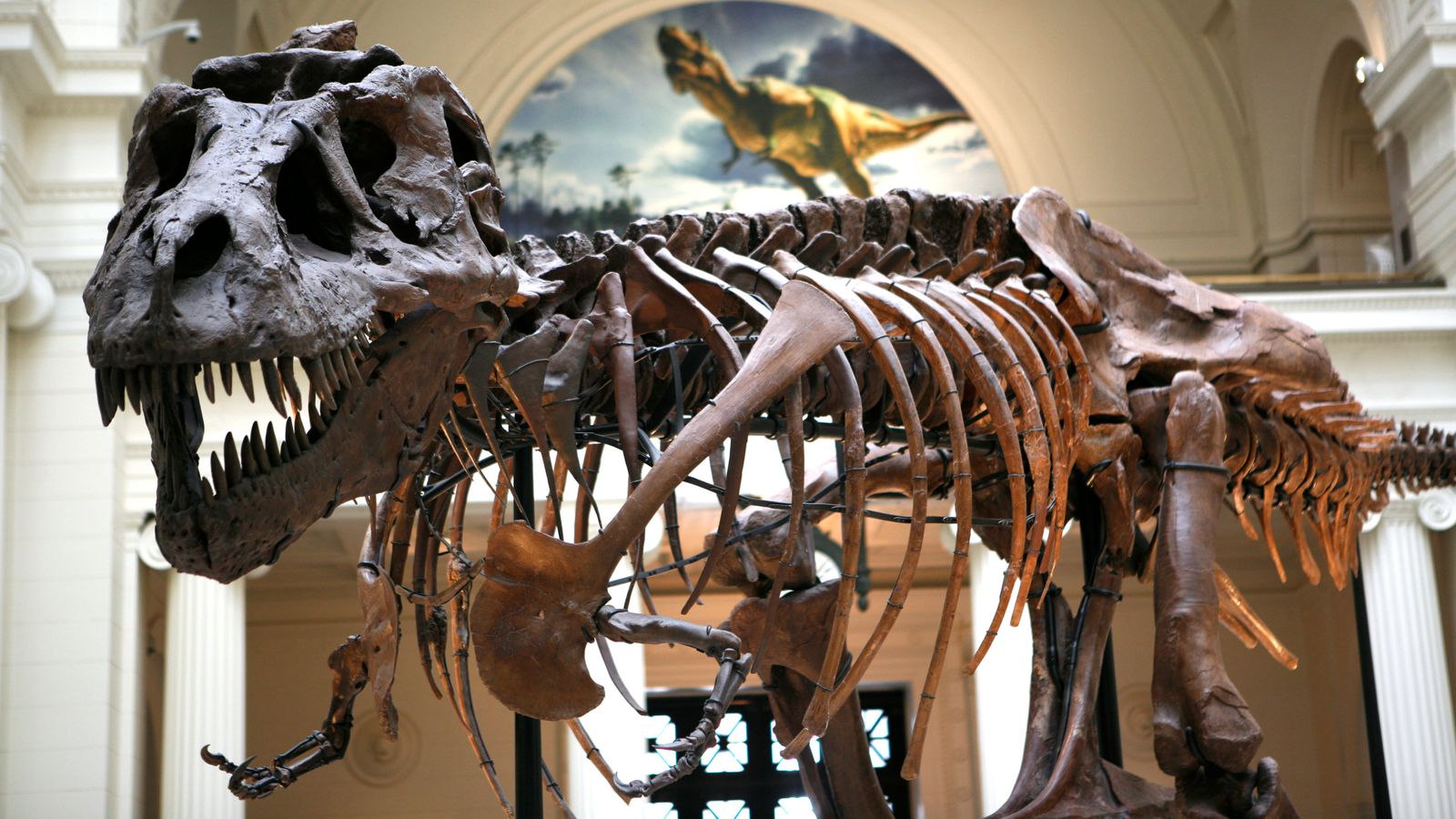First unearthed in 1942, the fossils were the subject of debate on whether they were from junior Tyrannosaurus Rexes or from Nanotyrannus lancensis – smaller relatives of the iconic dinosaurs.
By Dylan Donnelly, news reporter
Fossils once thought to be the skulls of teenage Tyrannosaurus Rexes actually belonged to a different species of dinosaur, scientists have concluded.
First unearthed in Montana, US, in 1942, the remains have been the subject of debate as to whether they were from junior T. Rexes or from Nanotyrannus lancensis – smaller relatives of the iconic dinosaurs.
According to research from the Milner Centre for Evolution at the University of Bath, the fossils were from adult dinosaurs, meaning the 66-million-year-old remains are more likely from the Nanotyrannus.
The university’s Dr Nick Longrich said he was “pretty blown away” by the findings, based on analysis of growth rings in the fossilised bones and modelling of the growth of the animals.
“I didn’t expect it to be quite so conclusive,” he said. “If they were young T. Rex they should be growing like crazy, putting on hundreds of kilograms a year, but we’re not seeing that.
“We tried modelling the data in a lot of different ways and we kept getting low growth rates.
“This is looking like the end for the hypothesis that these animals are young T. Rex.”
Read more:
Last meal of T. Rex revealed after stomach contents preserved in fossil
T. Rex may have used small arms for mating
In the University of Bath’s modelling, researchers noted that the dinosaurs studied would have grown to a maximum size of around 900 to 1,500 kilograms and five metres, about 15% of the size of an adult T. Rex.
Dr Longrich added: “In the same way that kittens look like cats and puppies look like dogs, the juveniles of different tyrannosaurs are distinctive.
“And Nanotyrannus just doesn’t look anything like a T. Rex… The arms are actually longer than those of T. Rex.
“Even the biggest T. Rex, has shorter arms and smaller claws than in these little Nanotyrannus.
“This was an animal where the arms were actually pretty formidable weapons. It’s really just a completely different animal – small, fast, agile.
“T. Rex relied on size and strength, but this animal relied on speed.”
The report was published in the journal Fossil Studies.

Dr. Thomas Hughes is a UK-based scientist and science communicator who makes complex topics accessible to readers. His articles explore breakthroughs in various scientific disciplines, from space exploration to cutting-edge research.






/cdn.vox-cdn.com/uploads/chorus_asset/file/25446416/pixel9fam.jpeg)

